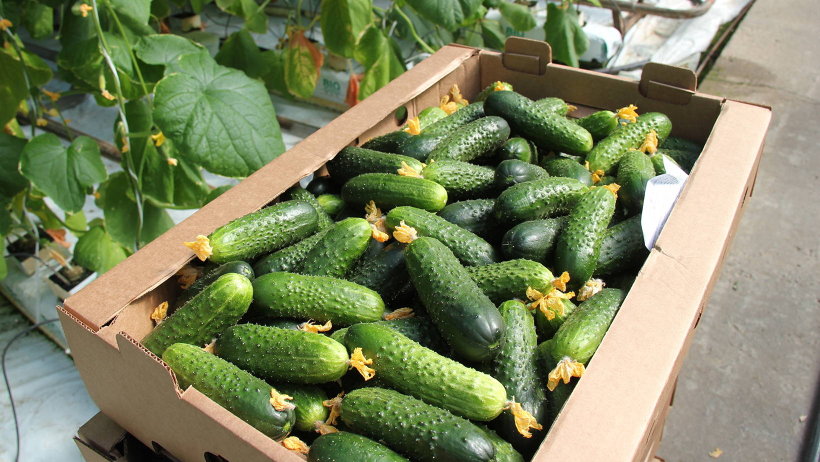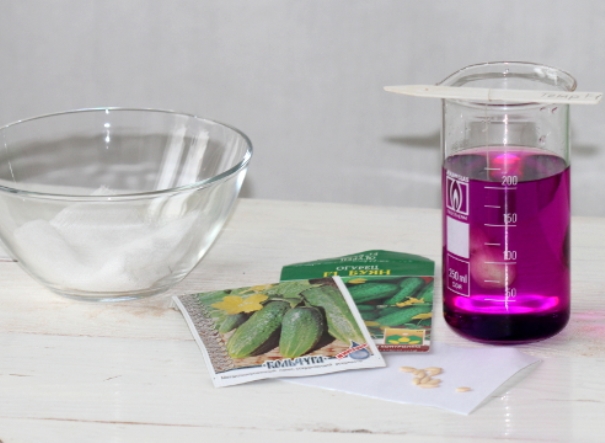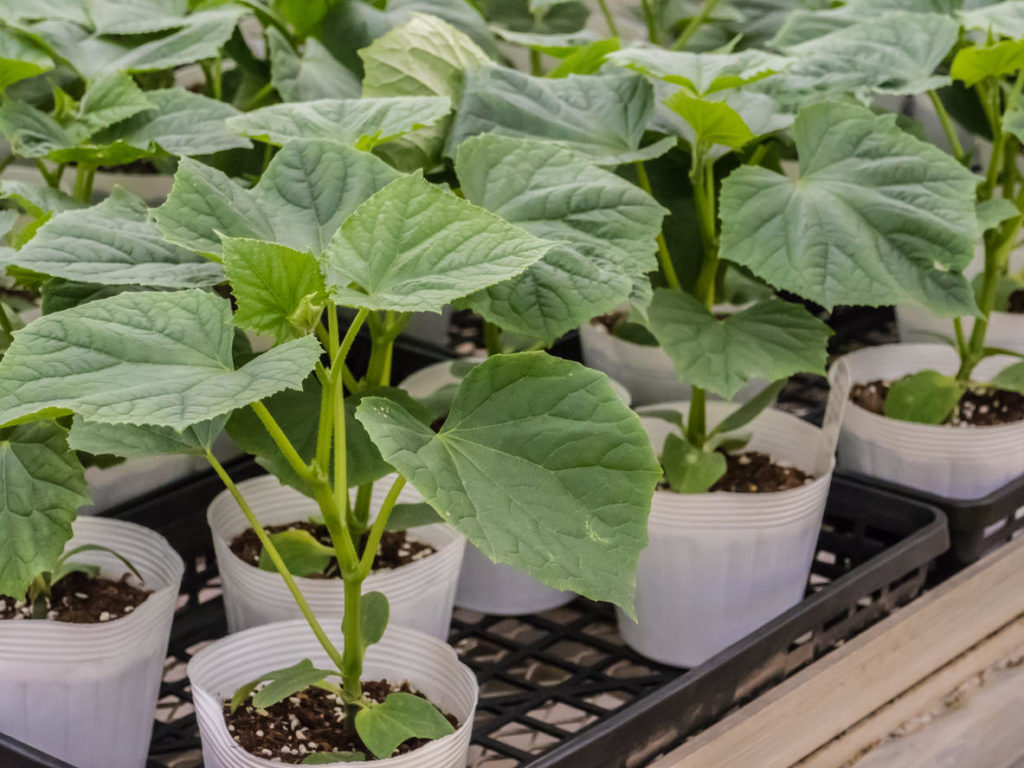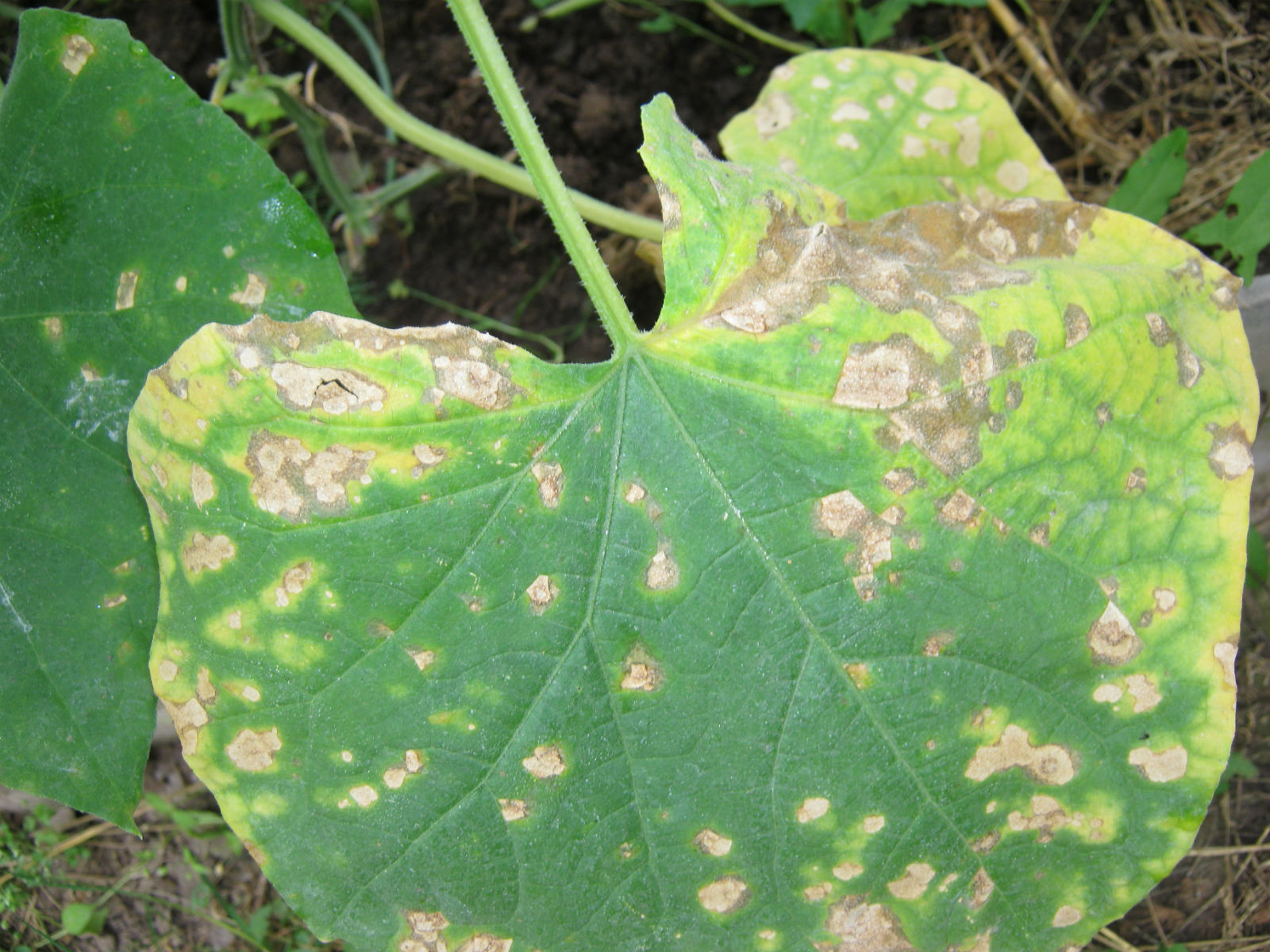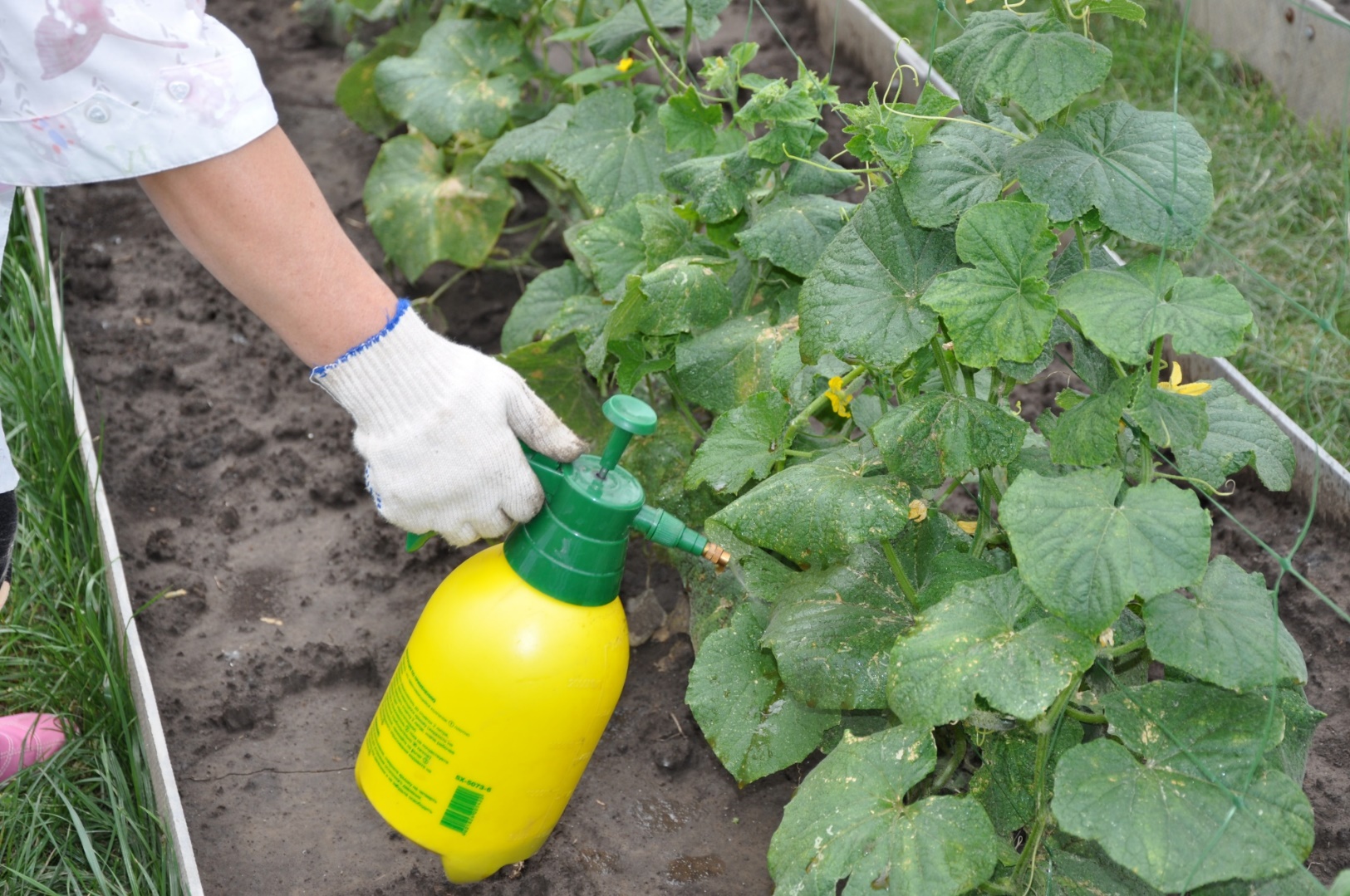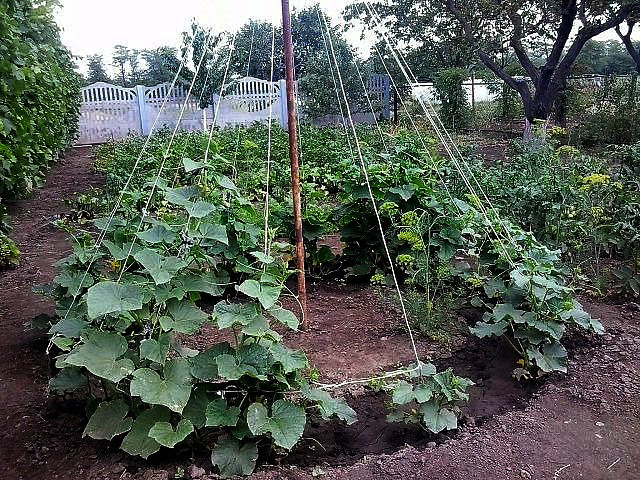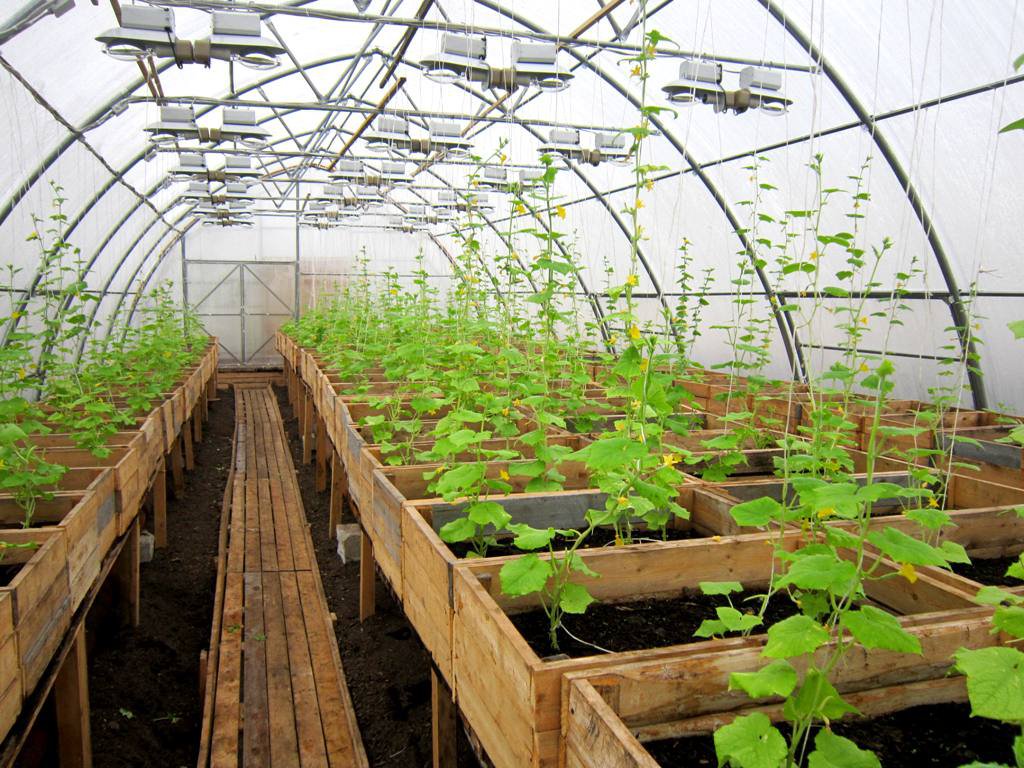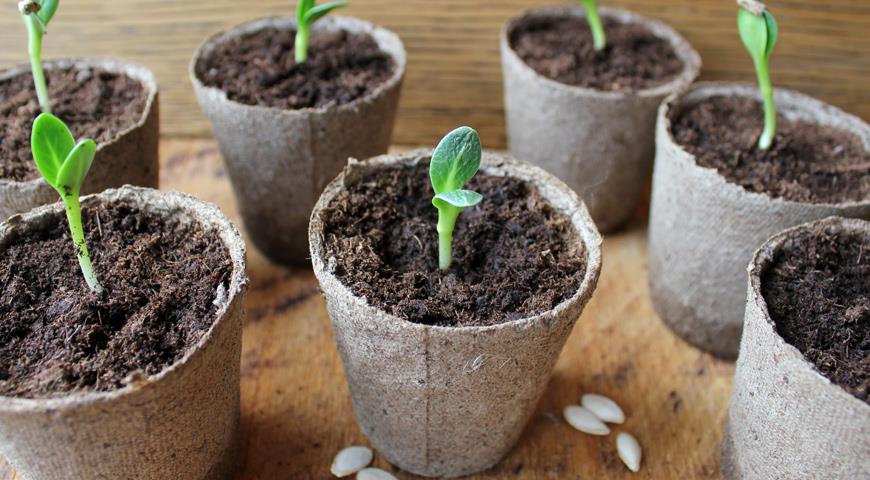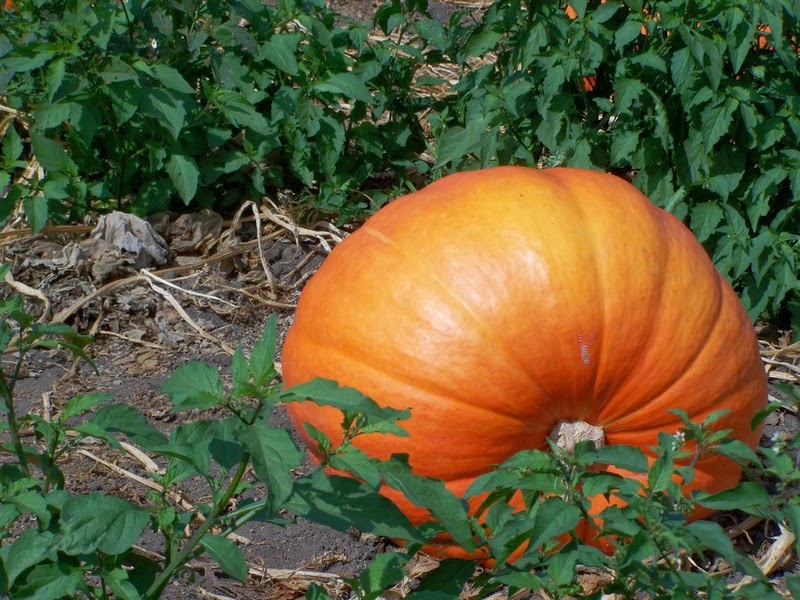Content:
Cucumbers are grown in almost every vegetable garden. They are eaten fresh, salted or preserved. Like any culture, they have their own characteristics in agricultural technology. Having studied them, it will become clear how to get a good harvest of cucumbers in the country.
Preparation and selection of a landing site
In order to harvest a large harvest of cucumbers, it is important to take care of choosing a good location for the crop. Cucumbers will grow better after potatoes, tomatoes, legumes, peppers and cabbage. They are not recommended to be planted after other pumpkin crops earlier than 5 years later, since related crops impoverish the soil, using trace elements necessary to obtain a rich harvest of cucumbers.
When choosing a landing site, they adhere to the requirements:
- The site must have good lighting; the beds must not be allowed to be shaded by trees or buildings.
- The place must be protected from winds. To protect the cucumber garden from the wind, you can plant tall plants nearby: corn, sunflower and others.
- The size of the plot is important. The distance between the bushes should be at least 50 centimeters to ensure free growth. If the plot is small, it is better to place the cucumbers in a checkerboard pattern.
Preparing the soil for planting
Soil preparation begins in the fall. To enrich the soil, 5 kg of manure and 30 g of potassium-phosphorus fertilizers are applied per 1 sq. meter. Then the soil is well dug to a depth of 40 cm.
With the onset of spring, the soil is dug up again, adding 1 sq. meter 3 kg of humus and 50 g of mineral fertilizers. If the soil has not been prepared in the fall, an increased amount of humus is introduced during the spring digging. If humus is not enough to fertilize the entire site, it is added directly to the planting holes.
Planting culture
How can you speed up the fruiting of cucumbers? Grow seedlings. When it is planted in a permanent place, the harvest will ripen 2-4 weeks earlier than with a conventional planting.
Seed preparation for planting
For sowing, use only full-weight seeds. Then they need to be warmed up. For this, the seeds are kept near heating devices for about a month. The optimum temperature for warming up is +25 degrees.
Then the seeds are disinfected: they must be soaked in a weak solution of potassium permanganate or tincture of garlic for half an hour, then rinsed.
The seeds wrapped in cloth are kept for 12 hours in a nutrient mixture of 1 liter of water, 1 teaspoon of ash and the same amount of nitrophoska. After soaking, the seeds are washed, placed in a moist material and left to swell for two days at a temperature of + 20 degrees.
Cucumber seeds are placed in the refrigerator for 24 hours before planting. Preparatory measures are not carried out with the seeds of hybrids, since they have already been processed by the manufacturer.
Growing seedlings
Seeds are sown for seedlings in April. Seedlings are planted in low 12-centimeter containers. To prepare the soil, sawdust, humus and peat are mixed in a 1: 2: 2 ratio. For 10 liters of the mixture obtained, add 2 tablespoons of ash and nitrophosphate. 1 sprouted seed is placed in the container to a depth of 1 centimeter. Watering the seedlings is necessary once every 7 days. In phase 2 of these leaves, fertilizing with nitrophos or nitroammophos is carried out: 1 teaspoon of fertilizer is consumed per liter of warm water. Seedlings are planted in a permanent place in a month.
Planting seedlings and sowing cucumbers
The planting bed must be dug out in a day. It is recommended to spill it with hot water, in which 1 spoon of copper sulfate is dissolved. For 1 square meter, you will need 3 liters of solution. Before planting seedlings, holes are made in the garden bed. The distance between the holes should be at least 50 cm, the depth should be 4 cm. Several seeds are placed in the prepared holes or seedlings are placed.
When planting cucumbers in a greenhouse or under cover, adhere to the following requirements:
- The temperature in the greenhouse should not drop below +18 degrees. A drop in temperature will stop plant growth.
- It is necessary to maintain high humidity - 80-85%.
To maintain high humidity in a greenhouse, for example made of polycarbonate, a pair of large metal barrels are placed at different ends of the structure. I fill the containers with water. When heated during the daytime, water evaporates and creates the necessary level of humidity. At night, the barrels give off heat and maintain a warm air temperature.
Cucumber garden care
The beds must be kept clean and all weeds must be carefully removed. For the first three weeks, small bushes need to be loosened to a depth of 3 cm.
Cucumbers need to be tied up regularly. They also pinch the main stem after the 7th leaf appears. This will allow the plant to shoot more side shoots and increase the yield.
Timely collection of fruits stimulates an increase in yield. It is recommended to pick cucumbers at least three times a week.
Watering
The plant loves moisture, so the question of how to grow a good harvest of cucumbers should be answered: by ensuring good watering.
It is better to water it with warm water. Before flowering, cucumbers are watered every 7 days; during the ripening period, the time between waterings is reduced to 3 days.
Top dressing
In the greenhouse and in the open ground, complexes of mineral and organic fertilizers are used for feeding. Fertilize cucumbers to increase the yield at least 5 times during the growing period:
- The first feeding is done at the beginning of flowering. To do this, dissolve potassium sulfate, superphosphate and urea in 5 g each in 10 liters of water. Add a glass of thick mullein or 30 g of sodium humate to the mixture.
- When the bushes begin to bear fruit, top dressing is made from 1 tablespoon of nitrophosphate and 1 cup of thick mullein, diluted in 10 liters of water.
- For the following fertilizers, use a solution of 10 liters of water, 5 g of potassium sulfate and half a liter of mullein. The solution consumption is 5 liters per 1 sq. M.
You can replace the mullein with natural humic fertilizers, for example, Fertility, Ideal.
Pest and disease control
Timely detection of the first signs of disease allows you to take the necessary measures to save plants and crops.
Cucumbers are often subject to fungal diseases:
- cladosporiosis.It is characterized by the appearance of dark spots on the leaves. The fruits become crooked, take on a dark shade, their growth stops. For treatment, benzimidazole drugs are used.
- powdery mildew. The first sign is that a white bloom appears on the leaves, after which the plant withers. Powdery mildew is caused by weeds in the garden. Treatment is carried out with fungicides.
- peronosporosis. It appears as yellow spots on the leaves, which lead to the drying out of the plant. Peronosporosis is treated with fungicides.
Of the pests, cucumbers are threatened by spider mites and whiteflies. For treatment and prevention, insecticides are used, and during the period of fruit ripening, the plants are treated with soapy water.
Prevention of diseases and pests of cucumbers:
- To scare off pests, garlic, basil, dill or mustard are planted between the beds.
- Every year, the place of planting of cucumbers should be changed and a complex of mineral and organic fertilizers should be applied.
- It is necessary to observe the crop rotation. Cucumbers are not planted after pumpkin crops.
- Soil disinfection - prevention of attacks by spider mites, ants and whiteflies.
- In greenhouse buildings, windows are regularly opened to create additional ventilation between the plants.
- As a preventive measure, the bushes are treated with a karbofos solution every 5 days.
Secrets of increasing the yield of cucumbers
- In order for the earth to warm up faster in spring, it should be covered with black material.
- A small greenhouse or a tunnel of arcs can protect cucumbers from the cold.
- If there is not enough space on the site to grow a crop, it can be planted in barrels. For such planting, varieties are used that have a strong climbing ability.
- Growing cucumbers on trellises will make it easier to care for and collect vegetables, as well as save space in the garden.
- Watering is best done early in the morning. By the evening, the ground overheats, cold water can damage the roots of plants.
- The largest harvest can be obtained at the beginning and at the end of summer. Because cucumbers only need 12 hours of daylight to grow well.
- It is important to huddle the cucumbers so that the plants can develop additional roots as well as protect the stem from fungus.
- To increase the formation of female flowers, watering is reduced before flowering. The bush activates the growth of flowers to avoid death.
- Experienced gardeners are advised to remove the very first ovaries. At the time of their formation, the plant has a fragile root system, therefore, after the procedure, it will direct its forces to strengthen the bush.
Growing cucumbers is not an easy task. But with the right approach to agricultural technology, you can grow cucumbers in a greenhouse, a greenhouse, in the open field and even on a balcony or window in a house. To increase the number of fruits, you should pay attention to the productive hybrids, know when the plant needs to be watered and fed. Then cucumber bushes will delight you with a rich and tasty harvest.
